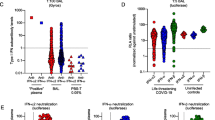Abstract
Immunoglobulin G (IgG) is quantitatively the predominent immunoglobulin protein in the distal airway of the human host. IgG enters the distal lung from circulating pools and plasma cells located largely in the interstitium. Although all four IgG subclasses are present in human lung secretions, only subclasses G3 and, to a lesser degree, G1 attach to pulmonary macrophage membrane receptors. IgG opsonic antibodies are essential for the optimal clearance of a very troubling pathogen,Pseudomonas aeruginosa. Nosocomial pneumonia caused by this gram-negative bacillus responds poorly to potent antimicrobial agents and is associated with a 70 % mortality. To a great extent the morbidity and mortality resulting from nosocomial pneumonia caused byPseudomonas spp. are attributable to ineffective humoral immune response to this bacterium. IgG2 antibodies in response to pseudomonal lipopolysaccharide are poorly opsonic in the macrophage system, and derepression of the potent pseudomonal elastase, an enzyme with broad substrate specificity, contributes to the disruption of other IgG antibodies.
Similar content being viewed by others
References
Eichoff, T. C. Respiratory tract infections. Goals for 1985. American Journal of Medicine 1985, 78, Supplement 6b: 58–68.
Centers for Disease Control: Nosocomial infection surveillance, 1984. Morbidity and Mortality Weekly Report 1986, 35: 17s.
Karnad, A., Lavorex, S., Berk, S. L. Pneumonia caused by gram-negative bacilli. American Journal of Medicine 1985, 79, Supplement, 3b: 61–67.
Fick, R. B. Pseudomonas in cystic fibrosis: sylph or syncophant? Clinics in Chest Medicine 1981, 2: 91–102.
Fick, R. B., Hunninghake, G. W. Antimicrobial defense of the lung: importance of secretory immunoglobulin A and opsonic immunoglobulin G antibodies. Current Pulmonology 1985, 7: 165–198.
Bienenstock, J., Befus, D., McDermott, M. Regulation of lymphoblasts traffic and localization of mucosal tissues with emphasis on IgA. Federation Proceedings 1983, 42: 3213–3219.
Brandtzaeg, P. Review and discussion of IgA transport across mucosal membrane. In: Strober, W., Hanson, L. A., Sell, K. W. (ed.): Recent advances in mucosal immunity. Raven Press, New York, 1982, p. 62–81.
Johanson, W. G., Woods, D. E., Chaudhuri, T. Association of respiratory colonization with adherence of gram-negative bacilli to epithelial cells. American Review of Respiratory Disease 1979, 119: 667–673.
McChesney, D., Traymont, E. C., Bostago, J. W. Genital antibody response to parental gonococcal pilus vaccine. Infection and Immunity 1982, 36: 1006–1011.
Homan, A., Schmidt, G., Rowley, D. Intestinal and serum antibody responses in mice after oral immunization withSalmonella, Escherichia coli hybrid strains. Infection and Immunity 1979, 25: 27–34.
Kaltreider, H. B., Chan, N. L. The class of specific immunoglobulin composition of fluids obtained from various levels of the canine respiratory tract. Journal of Immunology 1976, 116: 423–428.
Fick, R. B., Nagel, G. P., Squier, S. U., Wood, R. E., Ggee, J. B. L., Reynolds, H. Y. Proteins of the cystic fibrosis respiratory tract: fragmented IgG opsonic antibody causing defective opsonophagocytosis. Journal of Clinical Investigation 1984, 74: 236–248.
Fick, R. B., Metzger, W. J., Richerson, H. B., Zavala, D. C., Moseley, P. L., Schoderbek, W. E., Hunninghake, G. W. Increased bronchovascular permeability following allergen exposure in asthmatics. Journal of Applied Physiology 1987, 63: 1147–1155.
Peterson, M. W., Clark, R., Stone, P. Shasby, D. M. Neutrophil cationic protein increased endothelial albumin transport. American Review of Respiratory Disease 1985, 131: 421–426.
Hance, A. J., Saltini, C., Crystal, R. G. Does de novo immunoglobulin synthesis occur on epithelial surfaces of the human lower respiratory tract? American Review of Respiratory Disease 1988, 137: 17–25.
Kurlander, R. J., Barker, J. The binding of human IgG1 monomers and small covalently cross-linked polymers of IgG1 to human peripheral blood monocytes and polymorphonuclear leukocytes. Journal of Clinical Investigation 1982, 69: 1–10.
Naegel, G. P., Young, K. R., Reynolds, H. Y. Receptors for human IgG subclasses on human alveolar macrophages. American Review of Respiratory Disease 1984, 129: 413–418.
Fick, R. B., Olchowski, J., Squier, S. U. Immunoglobulin G subclasses in cystic fibrosis: IgG2 response toPseudomonas aeruginosa lipopolysaccharide. American Review of Respiratory Disease 1986, 133: 418–425.
Moss, R. B., Shu, Y. B., Lewiston, N. J. Association of systemic immune complexes, complement activation, and antibodies toPseudomonas aeruginosa of lipopolysaccharide and exotoxin A with mortality in cystic fibrosis. American Review of Respiratory Disease 1986, 133: 648–656.
Hornick, D. B., Fick, R. B. The IgG subclass composition of immune complexes and the pathogenesis in cystic fibrosis lung disease. Chest 1987, 92: 79.
Fick, R. B., Reynolds, H. Y. Pseudomonas respiratory infection in cystic fibrosis: a possible defect in opsonic IgG antibody? Bulletin European de Physiopathologie Respiratoire 1983, 19: 151–161.
Doring, G., Obernesser, H.-J., Botzenhart, K. Extrazellulare toxine vonPseudomonas aeruginosa. II: Einwirkung zweier gereinigter Proteasen auf die menschlichen Immunoglobuline IgG, IgA und Sekretorisches, IgA. Zentralblatt für Bakteriologie, Mikrobiologie und Hygiene (A) 1981, 249: 89–97.
Holder, I. A., Wheeler, R. Experimental studies of the pathogenesis of infections owing toPseudomonas aeruginosa: in elastase and IgG protease. Canadian Journal of Microbiology 1984, 30: 1118–1127.
Author information
Authors and Affiliations
Rights and permissions
About this article
Cite this article
Fick, R.B. Lung humoral response toPseudomonas species. Eur. J. Clin. Microbiol. Infect. Dis. 8, 29–34 (1989). https://doi.org/10.1007/BF01964117
Issue Date:
DOI: https://doi.org/10.1007/BF01964117




